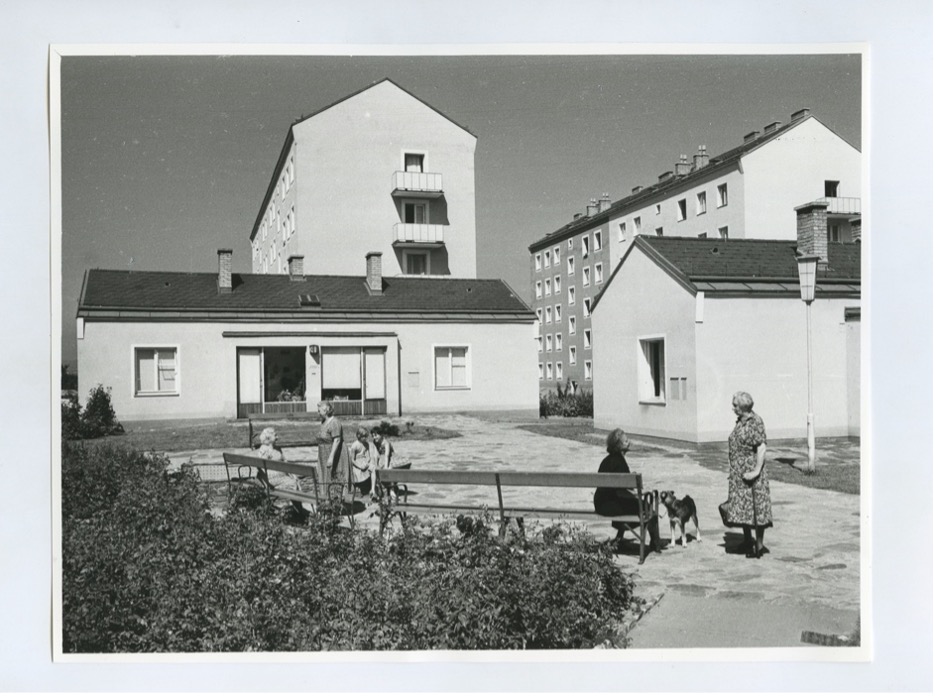In the 1950s, Vienna ventured a pioneering experiment in social housing. Over two decades, the City built one- and two-storey apartment blocks in the open spaces of more than thirty municipal housing estates erected during that period. These settlements, soon known as “Alte-Leute-Siedlungen” (old people’s settlements) provided micro-apartments tailored to meet the needs of elderly people. The initiative emerged in response to the housing crisis of the post-war era, which was further exacerbated by the city’s demographic shift towards an aging population. While the “Alte-Leute-Siedlungen” varied in their implementation, they shared a defining characteristic – their architecture engaged with the surrounding outdoor spaces. Designed to facilitate barrier-free, self-determined living, they incorporated open spaces that functioned as social hubs and fostered strong neighbourhood ties within the social fabric of the Gemeindebau (municipal housing), a feature often lacking in today’s social housing. The housing experiment soon gained international recognition as a model for elderly housing. However, just twenty years after the first settlements were built, the city abandoned the model and shifted its focus towards building multi-storey retirement homes. Today, the once-pioneering model is largely forgotten. Although the buildings still exist—some renovated and repurposed, others left vacant and deteriorating—the original vision behind the settlements has faded from collective memory. Even the city administration holds no official records. Only a handful of archival materials, newspaper articles, and building remnants serve as testimony. However, the housing experiment of “Alte-Leute-Siedlungen” holds valuable lessons for today. Once again, Vienna faces challenges similar to those of seventy years ago. Once again, the population is undergoing a demographic change, creating an impact on the city and society. Once again, the same questions arise: What are the housing needs of elderly people? How can a sense of community and a “good” neighbourhood be fostered? This dissertation project seeks to uncover the remnants of the forgotten housing utopia: How was the model of the “Alte-Leute-Siedlung” originally conceived? What remains of it today? How should the housing stock be dealt with? What lost knowledge can be reactivated and made productive for today’s challenges in social housing?



